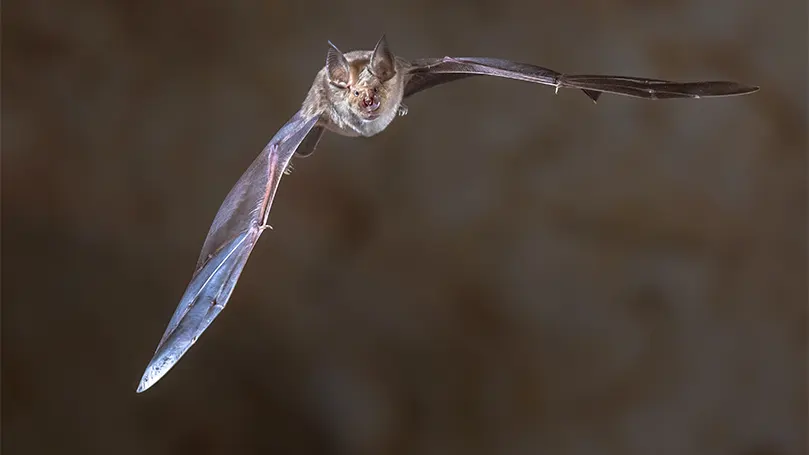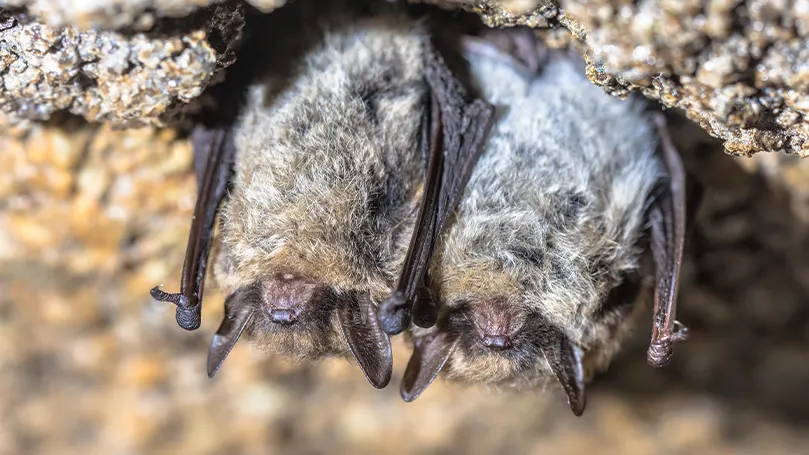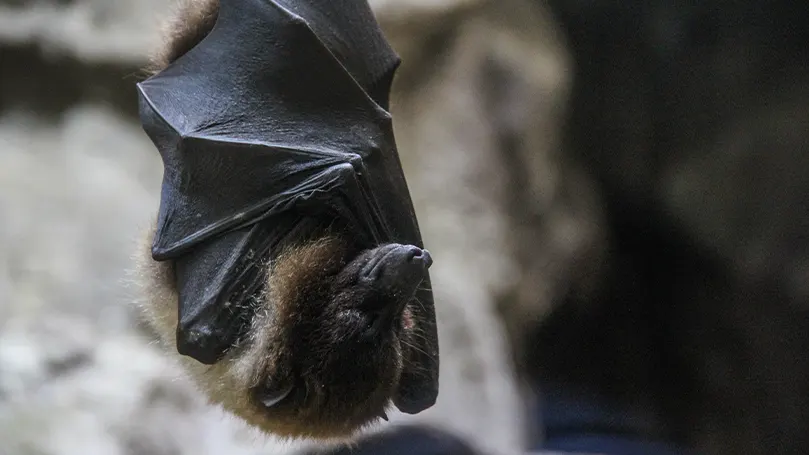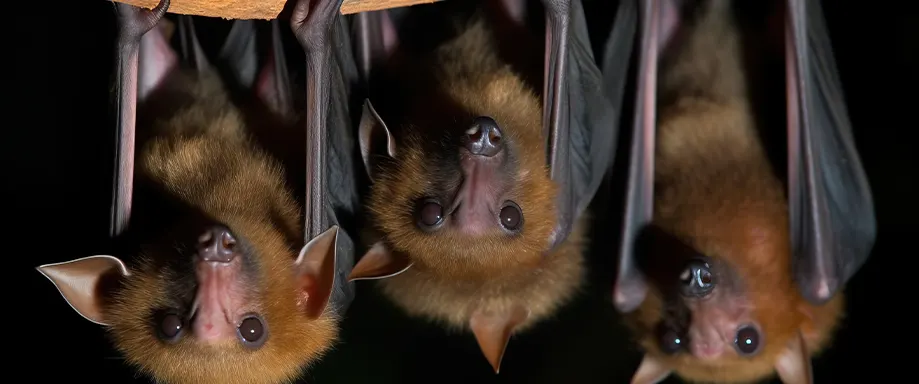How do bats fly?
In order to determine how bats sleep, we first have to talk about how they fly, as the two are linked! That's because of one simple fact – bats can't fly from the ground. Most bats simply don't have enough lift in order to comfortably take to the sky from the ground like other flying creatures.
On top of that, their hind legs also aren't powerful enough to give them a running start in order to have a fast enough takeoff speed. So, they instead perch high above the ground. That way, they are already in the air and can take off at a moment's notice. And we'll see why that is important a bit later on.
The difference between how birds and bats fly

Although at a glance, the way birds and bats fly might seem identical, there are actually quite a few differences. This is mostly because of how their wings are structured.
While birds have eloAlthough at a glance, the way birds and bats fly might seem identical, there are actually quite a few differences. This is mostly because of how their wings are structured.
While birds have elongated arms with a single finger, bats have three fingers that they can move independently. Plus, while birds have feathers and relatively strong, hollow bones, bats have a layer of stretched skin across their fingers and bones that can contort when needed.ngated arms with a single finger, bats have three fingers that they can move independently. Plus, while birds have feathers and relatively strong, hollow bones, bats have a layer of stretched skin across their fingers and bones that can contort when needed.
And this leads to the main difference between the two. While birds have a very powerful thrust and can outpace bats in terms of speed in distance, bats are the kings of manoeuvrability. They can twist and turn in the air, changing their direction in a split second.
So, when it comes to quickly zipping around, bats are right at home. However, since they've evolved to prefer manoeuvrability over raw power, they simply don't have the necessary takeoff speed and need to already be above ground. Plus, their unique wings allow them to climb onto high points where they can hang (unlike birds whose wings aren't flexible enough).
Where do bats sleep?

Now that we understand why a bat needs to sleep upside down, let's talk about the locations they choose to sleep in. The most obvious place is a bat cave, as we're sure you're all aware. However, it's far from their only napping spot.
From attics to tree branches, you can find bats sleeping upside down almost anywhere! And there's always one constant – that they're hard to reach. This makes a lot of sense once you consider that bats sleep during the day when other predators are awake and hungry.
And not only are they hard to reach but they're even hard to spot – especially if they're in a cave. After all, very few animals can both locate and get to a bat that's hanging upside down in a dark corner of a cave. Not to mention that they're also pretty good at picking up when something is near them and can outmanoeuvre just about every predator.
How do bats sleep upside down?
Okay, now we know why bats sleep so high up and upside down but how do they do it? Won't the blood rush into their head and make them dizzy? Well, no – because, unlike humans, bats are perfectly designed to sleep upside down and are arguably quite comfortable while doing so as well. This is due to two main factors.
Their talons

If a person spends any time hanging upside down, their arms and fingers would get tired. However, just like a sloth, it takes no effort for bats to hold on. This is because their talons are closed when in a relaxed position and require no further energy!
This is because their tendons are connected to the bone and not their muscles. The easiest way to visualise this is to think of a noose. When it's around a branch and there's a force pulling down, the noose remains firm and in place. However, if you let up the downward tension, the noose can become loose immediately.
Fundamentally, this is how a bat's talons operate. As long as their body weight is pulling down on their talons, they remain firmly in place. In fact, if a bat dies while upside down, it can even stay in that position forever (unless someone knocks it off). However, when bats fall, the tension is gone and they can make a quick getaway.
Their heart
Although a bat's talons are very impressive, they can't keep the bat from getting dizzy. Luckily, however, mother nature has a workaround. This is simply due to how compact a bat's upper body is. Since they don't have sprawling limbs like humans, their heart easily pumps blood to their entire body regardless of whether they're upside down.
And that means they don't suffer from the same dizzying effect as we do when blood rushes to our heads. In other words, with their talons not taking up any energy and their heart keeping things in check, bats can have their body relax and sleep like a log.
Conclusion
Although most bats sleep upside down (with only about 6/1200+ species not doing so), it's not immediately obvious why they choose to do so. However, once you start looking into their anatomy, as well as their place on the food chain, this mystery quickly starts getting dismantled! After all, it's survival of the fittest. So, the question shouldn't be why bats sleep upside down but rather why don't more animals do the same?













There are no comments yet
"*" indicates required fields